Upcoming 2006 Annual
Meetings
|
International Conference on Ophthalmic
Photography
May 18 - 21, 2006
San Francisco, California
Plan to attend the 6th quadrennial International
Conference on Ophthalmic Photography!
|
The Radisson Miyako Hotel, located in the historic Japan Town section
of the San Francisco, will be home to ICOP 2006. Only minutes from
the heart of San Francisco, this location offers easy access to the
excitement of downtown Union Square, the picturesque atmosphere of
Fisherman's wharf, and the stunning beauty of the Golden Gate. There
will be ample time to arrange for boat tours of San Francisco Bay,
side trips to the quiet, simple beauty of Muir Woods, or ferry trips
to the quaint shops of Saucelito. Coupled with over 20 hours of
scientific papers, international presentations, and invited lectures,
this is the perfect setting for the International Conference on
Ophthalmic Photography, ICOP'06. Plans are well under way for this
exciting collaboration between the AIMBI, JOPS, OIA, and OPS, and
it is time to mark your calendar and make plans for travel to San
Francisco in mid May of 2006!
This meeting will feature presentations by colleagues from all
over the world on a large variety of subjects, including digital
imaging, new technologies and innovations in present imaging techniques.
The meeting will take place at the Radisson Miyako Hotel, an area
filled with friendly people, intriguing shops and historic sites
at every turn.
The surrounding area offers breathtaking photographic opportunities
including San Francisco Bay, the spectacular Headlands, and Golden
Gate Park. The nearby valleys of Napa and Sonoma offer some of the
best vineyards in the world, presenting excellent opportunities
for pre- or post-meeting excursions.
ICOP'06 promises to be a memorable experience, both personally
and professionally. Registration, travel and hotel information can
be found on the Registration and Abstract forms page.
Please plan to attend!
http://www.icopmeeting.org
The Information
Communications Marketplace - 2006
Orlando, Florida

InfoComm Conference from June 3 - 9, 2006
InfoComm Exhibition from June 7 - 9, 2006
Information available at:
http://infocomm05.expoexchange.com/default.asp
The Premier Conference and Exhibition
for the AV Communications Industry
InfoComm 06 promises to be our most exciting
show yet! Check back for details soon. And find out why
725 companies chose to exhibit at last year's InfoComm. Contact
exhibitsales@infocomm.org
to exhibit at InfoComm in 2006.
Plan to attend this year's InfoComm conference and exposition to
see the largest event in the professional information communications
and electronics arena, and get a head start on the hottest and emerging
technologies. Now that AV is everywhere, tie it all back to the
manufacturers, integrators and professionals who are the source
for:
The InfoComm conference and exhibition will feature:
- Display and projection technologies
- Multimedia products and services
- Digital signage
- Networked information systems
- Audio technologies and services
- Security systems
- Streaming media
- Residential A-V systems
- Video and video production
- Furniture, racks, cases, stands
- Lighting and staging
- Cables and connectors
- Digital cinema and entertainment systems
- Wireless systems
- Control, interfacing, and signal distribution
- Structured wiring
- Collaborative conferencing including audio, video, data,
and web
Announcing
the 47th International Conference
on Health and Science Communications

Washington, DC to Host
International Health Communications Conference -
Washington, D.C. June 28 - July 2, 2006
2006 HeSCA Conference
Washington, DC – The 47th Annual International
Conference on Healthcare Communication, sponsored by the Health
and Sciences Communications Association (HeSCA) has chosen Washington,
DC as the host city for its 2006 conference. The conference will
give attendees the opportunity to learn the latest technical aspects
of media production and delivery as well as addressing the challenges
of providing leadership in a creative environment constrained by
dollars, pounds and yen. There will also be a vast selection of
workshops and lecture sessions for communications professionals
throughout the course of this four-day event.
The conference brings together leaders from North America, Europe,
and the Pacific Rim at a time when international healthcare initiatives
are flourishing.
HeSCA's strength is providing advanced educational opportunities
to the people at the forefront of communications technology, and
conference networking enables participants to generate strategies
for the future.
Background on HeSCA – The Health Sciences Communications
Association
HeSCA has a strong, nearly half-century history as a professional
association and began as the Council on Medical Television in 1959.
With the integration of technology into health care education and
information delivery, HeSCA continues to meet the needs of professionals
working in this evolving environment. For much of its history the
membership has worked in the field of medical education, but during
the 1980’s, with the changing structure of healthcare delivery,
employee training and communications became a part of the career
responsibilities. In the 1990’s and continuing today, many
HeSCA professionals find their careers shifting towards medical
marketing. The specialties within healthcare communications are
many and can focus by subject or technology; all are addressed by
the professional development opportunities found during the conference.
For more information on HeSCA as well as regular updates on the
2006 Conference Program, go to:
www.hesca.org
Announcing
the Annual Meeting of
The Association of Biomedical Communications Directors (ABCD)

June 2006
Washington, D.C.
ABCD is co-locating with our HeSCA colleagues again
this year for this combined meeting. The ABCD membership is encouraged
to register for the entire HeSCA meeting, the workshops, and informative
sessions through the HeSCA website at: www.hesca.org/meeting
Announcing
the 76th Annual Meeting BioCommunications Association
BIOCOMM - 2006
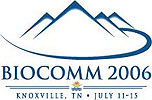
Knoxville, TN, July 11 - 15, 2006
Reserve some time on your summer calendar for BCA's
2006 Annual Meeting.
Details at: http://www.bca.org/annual_meeting/biocomm_2006.html
Announcing the 2006 Annual Meeting
of the
Association of Medical Illustrators
| |
August 2 - 6, 2006
Boston, MA
The annual meeting of the Association of Medical
Illustrators (AMI) will take place in Boston, MA, during the
first week of August 2006. At the meeting you will find a
diverse, dynamic group of medical illustrators, animators,
teachers, administrators, project managers, and other professionals
bound together by their common interests - art and science.
The medical illustration Salon will be the highlight of this
event, featuring professional and student work of the AMI
membership. Plan on attending, and check out the Boston SIGGRAPH
meeting as well that same week.
Additional information visit: www.ami.org |
The
2006 GNSI Annual Conference
July 30 – August 5, University of Wisconsin
Madison, Wisconsin
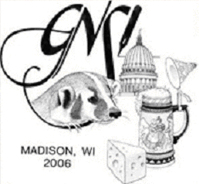
The name conjures up images of cheese curds, beer,
and the Green Bay Packers. Wisconsin is also a state of amazing
geological diversity, natural beauty, friendly people and great
learning institutions. I certainly hope that you will join us in
Madison to see old friends and make new, learn and share some art
experiences, and explore southern Wisconsin.
The landscape of Madison and the surrounding area
was formed by retreating glaciers approximately 13,000 years ago.
As such it contains a variety of lakes and marshes, prairie remnants,
interesting rock formations and a great diversity of wildlife. Madison
is located on an isthmus between lakes Mendota and Monona. Madison
is a quirky, multi-cultural gem that is tightly intertwined with
the University of Wisconsin. There are numerous restaurants, galleries,
and museums. The University is lively and welcoming and was recently
voted the 2005 “#1 Party School in America”. Now with
a combination of nature, culture, education and fun like that how
can this conference go wrong?
Our host at the University of Wisconsin is the Geology
Department, located in the Lewis G. Weeks Hall for Geological Science.
A theme that has emerged is The Passage of Time. Although we are
sponsored by Geology we won’t limit the exploration of time
to a strictly geological sense. All of us capture an object in time
– whether it is a flower that we draw before it fades, a fossil
from many years past, or conceptual art for a future event. We are
influenced by time – overnight deadlines, months before the
paycheck arrives… you get the idea! We are also short on time
to just draw for fun. We’ll keep that idea simmering in the
background throughout the week.
For additional information, please visit:
http://gnsi.science-art.com/index.htm
http://gnsi.science-art.com/2006WI/overview.shtml
NEW PRODUCTS
Poser 6 English Service Release 2 Now Available
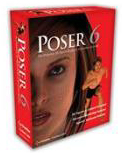
Poser 6 is now available for Macintosh and Windows!
Whether you create for print, animation or the web, there ís
always a need to integrate the human form. Poser 6 delivers the
power of interactive 3D figure design, offering infinite opportunities
to portray human diversity, form and expression. Design with the
human form for art, illustration, animation, comics, web, print,
education, medical, games, storyboarding, and more! Poser 6 offers
several enhancements and addresses known issues present in the following
areas:
- General Rendering
- FireFly Render Engine
- Preview Render Engine
- Sketch Render Engine
- File I/O
- External Binary Morph Targets
- Library
- Parameter palette
- Animation
- Make Movie
- Walk Designer
- Material Room
- Face Room
- Hair Room
- Cloth Room
- Content room
- Poser Python
- Morphing Tool
- Plus several other miscellaneous refinements
Visit Frontier's
web site for more information.
|
|
 |
|
Related Association News
The Association of Medical Illustrators, in conjunction
with The Society of Illustrators, The National Cartoonists
Society, The American Society of Architectural Illustrators,
and The Illustrators' Partnership of America, continues to
seek better ways to market and license the rights to their
creative work.
One of the goals of this working coalition is still to explore
the possibility of collecting and pooling artists' reprographic
fees in order to create a collective rights administration
to return reproduction royalties to illustrators.
Since the birth of the Illustrators' Partnership of America,
the organization's key mission has been the development of
a licensing agency that would truly represent the best interests
of American artists and illustrators.
For more information about the Illustrators' Partnership
of America, visit www.illustratorspartnership.org.
For information about protecting your copyrights:
|
|
Proposed Legislation Could Orphan Copyrights
On January 23, 2006 the U.S. Copyright Office issued their
Orphan Works Report, outlining their recommendations to Congress
for changes to the 1976 Copyright Act. While we know the Copyright
Office made a sincere effort to solve the problem of copyright
availability for users, we believe these proposed changes
will undermine copyright protections for artists.
The report defines an "orphan work" as any work
where the author is unidentifiable or unlocatable, regardless
of the age of the work. It extends to both published and unpublished
works, and includes both U.S. and foreign works.
At 127 pages, the report is too long to analyze in detail
here, but you can access it at the Copyright Office website.
For those who wish to cut to the chase, the explicit language
for their proposed changes can be found on page 127.
http://www.copyright.gov/orphan/orphan-report-full.pdf
To understand the effect these changes may have, consider
what the 1976 Act currently guarantees to you. It guarantees
that you have the exclusive right to authorize
or withhold reproduction of your work and to create
derivative works. It guarantees this from the moment you fix
the work in a tangible form, and it guarantees this without
imposing formalities such as a copyright mark
or registration. The Berne Convention for the Protection of
Literary and Artistic Works forbids such formalities as a
condition on the enjoyment and exercise of copyright. The
U.S. formally acceded to Berne in 1988.
Placing Relevant Information on Your Work
The legislation proposed by the Orphan Works Study
would not officially return artists to pre-Berne
status, but for practical purposes, it would have that effect.
It would not require you to mark each picture with
a copyright notice and your name. But failure to do so on
your part (or your publishers') could be used by infringers
to justify their own use of your work. Here's the relevant
part of the Copyright Office's explanation:
"For authors and copyright owners, marking copies
of their works with identifying information is likely the
most significant step they can take to avoid the work falling
into the orphan works category. This is particularly
true for works of visual art, like photographs and illustrations,
that otherwise do not contain text or other information that
a user can rely on to help determine the identity of the copyright
owner. Nothing in the Office's recommendation would make such
markings mandatory . . . Nevertheless, the presence and
quality of the information on particular copies will be a
highly relevant fact as to whether a reasonable search will
find the copyright owner." (p. 9, emphasis added)
In other words, the "information" that has been
placed on your work will be a "highly relevant fact"
in determining - for legal purposes
- whether a user has made a "reasonable search"
to find you before he or she uses your work. But since the
report doesn't set objective standards for what constitutes
a "reasonable search," it paves the way for endless
ambiguity. What do you do if a user infringes your work after
what he regards as a reasonable effort to find you? What if
someone simply uses your work on the grounds that you may
not find out about it, and if you do, justifies his actions
by citing the "fact" that your work lacked "relevant
information?"
No Penalties For Infringing Orphan Work
Those who have demanded this legislation have argued
that users should not be subject to penalties for infringing
orphan work. They say that the public should be encouraged
to use this work and that penalties would discourage use.
The Copyright Office has agreed:
"Our recommendation follows this suggestion by limiting
the possible monetary relief in these cases to only 'reasonable
compensation' which is intended to represent the amount the
user would have paid to the owner had they engaged in negotiations
before the infringing use commenced." (p. 12)
In other words, if someone infringes your work because they
couldn't find you - and you come forward to claim authorship
- this system would only require the infringer to pay you
the fee they presume you would have "negotiated."
Yet if someone has already published your work - and faces
no risk for statutory damages, attorneys' fees and court costs,
they'll be in a better position than you to dictate what constitutes
a "reasonable" fee. And unless you can work with
the fee they offer, you'll have no choice but to take the
issue to court, knowing that the cost of litigation could
well exceed whatever "reasonable compensation" the
courts might determine.
By considering and rejecting remedies for infringement, the
Copyright Office acknowledged the complaints by creators'
groups that individual authors generally lack the resources
to police unauthorized usage:
"While corporate copyright owners were generally in
favor of a reasonable compensation approach, individual authors
like photographers, illustrators and graphic artists noted
that under current conditions, obtaining a lawyer to even
file an infringement case is prohibitively expensive, so much
so that only where statutory damages are available is it possible
to file a case. If compensation were limited to only a reasonable
royalty, they fear that it will likewise be practically impossible
even to recover that compensation given the cost of litigation."
( p. 117)
But while the Report expresses "sympathy" for
this fact of life, it states that "[t]his problem . .
. has existed for some time and goes beyond the orphan works
situation, extending to all types of infringement of the works
of individual authors . . . It is not, however, within
the province of this study on orphan works." (p.114,
emphasis added)
Yet if the problem is not within the province of the Orphan
Works Study, we must introduce it into the coming
debate over legislation. Otherwise, a law that exposes
vast quantities of copyrighted work to potential abuse could
make the existing bad situation worse, making payment for
usage the option of last resort for any user who chooses to
exploit this glaring loophole.
Are Registries a Solution?
The Orphan Works Report notes that many respondents to the
Study proposed "registries or other databases of owner
or user information" as a possible solution of tracking
rights holders. A publicly available visual artists registry
would match unidentified art to an artist and/or the artist's
contact information. But creating a registry requires technology
and staff unavailable to independent artists. Other countries
protect their artists' exclusive rights through the administration
of collecting societies. The Orphan Works Report
states that "such administrative mechanisms might ultimately
be of great assistance in helping put owners and users of
orphan works together" (p. 95), but says the Copyright
Office lacks the resources to create and administer them:
"[W]e believe that registries are critically important,
if not indispensable, to addressing the orphan works
problem, as we explain above. It is our view that such registries
are better developed in the private sector, and organically
become part of the reasonable search by users by creating
incentives for authors and owners to ensure that their information
is included in the relevant databases." (p.106, emphasis
added)
But if Congress can't allocate funds to create the kind of
registry that Orphan Works legislation would make "indispensable,"
Congress should not impose that burden on rights holders as
a condition of maintaining their copyrights. Especially since
the effect of these changes would be retroactive,
that is, affecting work created over the last 28 years, during
which time artists did work with the expectation that it would
be protected - whether marked and registered or not, for their
lifetime plus 50 (now 70) years.
Specific Exemptions as a Solution
We believe most artists would agree with the Copyright Office
that an orphan works problem exists. Any of us who have ever
wanted to duplicate old family photos will understand how
troublesome (even futile) it can be to try tracking down a
long-lost photographer or other potential rights-holder. But
if Congress concludes that legislation is necessary to solve
problems like this, we urge them to craft specific, limited
exemptions instead of sweeping legislation that shifts
the burden of diligence from users to copyright holders.
A limited exemption could be crafted to solve family photo
restoration and reproduction issues without otherwise gutting
photographers' copyrights. Usage for genealogy research is
probably already covered by fair use, but could be specifically
exempted if necessary. Limited exemptions could be designed
for documentary filmmakers as well. Libraries and archives
already have generous exemptions for their not-for-profit
missions, but if their missions are changing to include for-profit
ventures, they should abide by commercial standards for the
usage of copyrighted material.
The Next Step
In conducting this study, the Copyright Office identified
as the primary goal of Orphan Works legislation: "to
make it more likely that a user can find the relevant owner
in the first instance, and negotiate a voluntary agreement
over permission and payment, if appropriate, for the intended
use of the work." (p. 8) Yet we're afraid that this system
as proposed will do little to "bring users and authors
together." In fact, it could well force authors into
the "marketplace" of the courts to attempt recovery
of compensation after their work has been used and their copyrights
compromised.
Last spring nearly 2,000 individual artists and 42 organizations
joined us in opposing Orphan Works legislation. We thank all
of you for your responses to our submission to the Study.
Since then, we've had several opportunities to express our
opposition directly to the Copyright Office. We participated
in the government‚s two-day Orphan Works roundtables
last July 26 and 27, and at their invitation, we met individually
with Copyright Office attorneys on November 17. Now we'll
need to rally again to see that the proposals in this study
are not enacted into law. This will require a practical strategy
and a concerted effort. We'll keep you informed as this develops,
and we'll let you know how you can help.
Brad Holland and Cynthia Turner
for the Board of the Illustrators' Partnership of America
http://www.illustratorspartnership.org
|
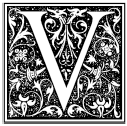
About The Vesalius Trust
The Vesalius Trust for Visual Communication in the Health Sciences
was incorporated as a nonprofit public foundation in 1988. Established
under the direction of the Board of Governors of the Association
of Medical Illustrators, the Trust strives to develop and support
education and research programs in the field of health science communications.
History of the Trust
Since its founding in 1988, the Trust has endeavored to identify
and secure funding for educational and research activities in visual
communications in the health sciences, and to act as a conduit for
these resources. Currently, the Trust supports: scholarships, research
grants, continuing professional education, and an international
recognition program for exceptional contributions to medical education.
The Frank H. Netter, M.D. Award and Vesalius Trust Awards of Excellence
recognize and honor significant contributions to the field of health
science communications.
Mission of the Trust
To provide leadership for the advancement of education and research
in visual communications for the health sciences.
Vision Statement
To be known as the premier resource for funding of visual communications
in the health sciences.
Our Commitment
Our commitment to support visual communications in the health sciences
is broad. During the past year, the Trust has endeavored to form
alliances with related groups and associations within the field
of biocommunication. The Trust not only supports scholarship and
research in the profession of medical illustration, but also includes
and supports the areas of biomedical and scientific photography,
biomedical visualization, anatomical animation, life science and
zoological illustration, microbiological and molecular visualization,
video production, and biomedical research.
Contributions
We welcome financial contributions of any size from individuals
or corporations interested in the Trust's mission. Those individuals
interested in making a tax deductible contribution to the Vesalius
Trust are encouraged to visit the Trust's website below.
E-mail inquiries regarding the Vesalius Trust are also encouraged
at: Vesaliustrust@aol.com
Please visit The Vesalius Trust's web site for additional information:
www.vesaliustrust.org
NEW PRODUCTS
Announcing the All-New StickyBrain 4
The #1 bestselling note manager has just gotten better.
Get organized and bring harmony to your digital life with this fourth
generation note manager.
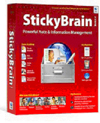
StickyBrain is your universal note manager for the
Mac. Use it to store all of the miscellaneous information that doesn’t
fit neatly anywhere else. This fourth generation note manager makes
it easier than ever to find and access your notes from any application.
StickyBrain is bound to become one of the most used and useful pieces
of software on your computer.
http://www.chronosnet.com/Products/sb_product.html
Micromat Announces TECHTOOL PROTÉGÉ

Micromat has a new tool available for those of you
who see to the care and feeding of multiple Mac systems. Called
TechTool Protege, it’s a pocket-sized 1GB FireWire drive that
you can plug into a Mac, boot up, and run a full suite of TechTool
Pro diagnostic software, including the new DiskStudio utility. Come
to think of it, those of us who have just one Mac will find this
pint-size product mighty useful, too.
|
